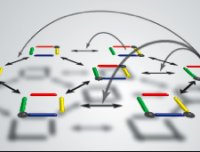
How did molecules on the early Earth assemble into storehouses of information (RNA) and machinery (proteins) surrounded by a membrane? The membrane is the most readily explained component of the first cells, since prebiotic molecules called fatty acids self-assemble in water to form individual, cell-like compartments. This observation leads to two challenges that we have addressed: 1) how could the building blocks of RNA and proteins have been selected, concentrated, and co-localized with the membranes, and 2) since adding salt to the water causes fatty acid membranes to aggregate, how could the compartments have remained as individual “cells” in the early ocean?
We have discovered that the building blocks of RNA and proteins, but not several related compounds, spontaneously bind to fatty acid membranes, and that this binding stabilizes them against salt [Black et al. PNAS 110, 13272 (2013)]. We are now investigating whether the membrane surfaces orient these components so as to facilitate the formation of RNA and protein.
 Getting Under Europa’s Skin
Getting Under Europa’s Skin Tracing Formation and Evolution of Outer Solar System Bodies Through Stable Isotopes and Noble Gas Abundances
Tracing Formation and Evolution of Outer Solar System Bodies Through Stable Isotopes and Noble Gas Abundances Photosynthesis, a Planetary Revolution
Photosynthesis, a Planetary Revolution Xenon: King of the Gases
Xenon: King of the Gases